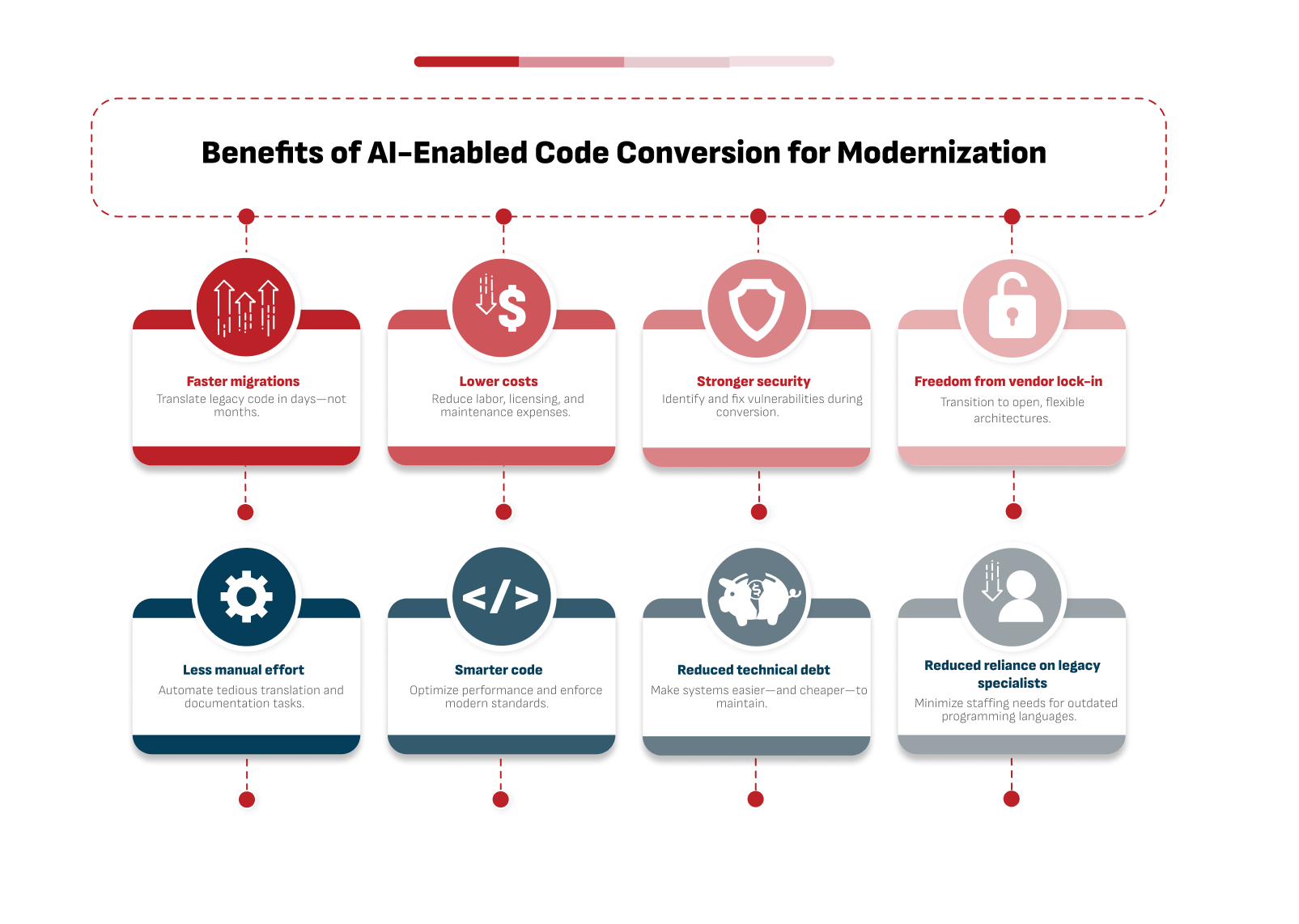Government agencies are looking to use artificial intelligence (AI) and commercial tools to modernize their IT infrastructures while minimizing costs and risk. One powerful application is to use Generative AI (GenAI) to convert legacy systems and replace outdated languages and architectures. This approach, known as AI-enabled code conversion, delivers measurable value through increased speed, reduced waste, and greater operational resilience, all while accelerating the transition to modern programming languages.
Abt teams have the experience to know why the first output from a GenAI tool is often the best, especially when using deterministic settings: because GenAI is initially anchored on the most probable output. On follow-up, these tools may become less accurate as they navigate the embedding space, leading to less probable outputs. We know when to give feedback to GenAI in the same conversation, and when to initiate a new conversation to get the best possible results.
Why Legacy Systems Are Holding Agencies Back—And How AI Unlocks Progress
Advancements in AI, including GenAI, can provide significant advantages in modernizing federal IT systems, including improving code efficiency (i.e., minimizing compute resource utilization), managing technical debt more cost-effectively, and rapidly modernizing legacy systems without significant human intervention. According to a 2019 GAO report, the U.S. government spent $337 million maintaining just ten legacy systems, some of which were over 50 years old. Further, it was estimated that federal agencies spent 80% of their IT budgets, roughly $90B in 2019, on operations and maintenance, primarily focused on legacy systems. By replacing legacy codebases, agencies can shift away from aging infrastructure, such as on-premise, 3-tier architectures, and move toward modern, cloud-native environments that are more secure, scalable, and innovation-ready.
Outside of efficiency and cost savings, AI can help agencies with modernization efforts to support additional data integration efforts, handling of big data, and code parallelization efforts. Modern programming languages are also better suited for cloud computing, mobile applications, and the ability to support adoption of emerging technologies such as GenAI, edge computing, and quantum computing. AI-powered tools can also support compliance and security functions as they are able to identify security flaws in the original and converted code, ensuring safer transition, and can align the converted code to industry standards. Additional benefits include:
- Enforcement of consistent coding styles
- Detection of inefficient legacy code patterns
- Reductions in the need to maintain specialists for legacy languages
- Ability to suggest performance enhancements and ways to optimize code
- Generation of technical documentation
- Minimization of technical debt and future maintenance costs


